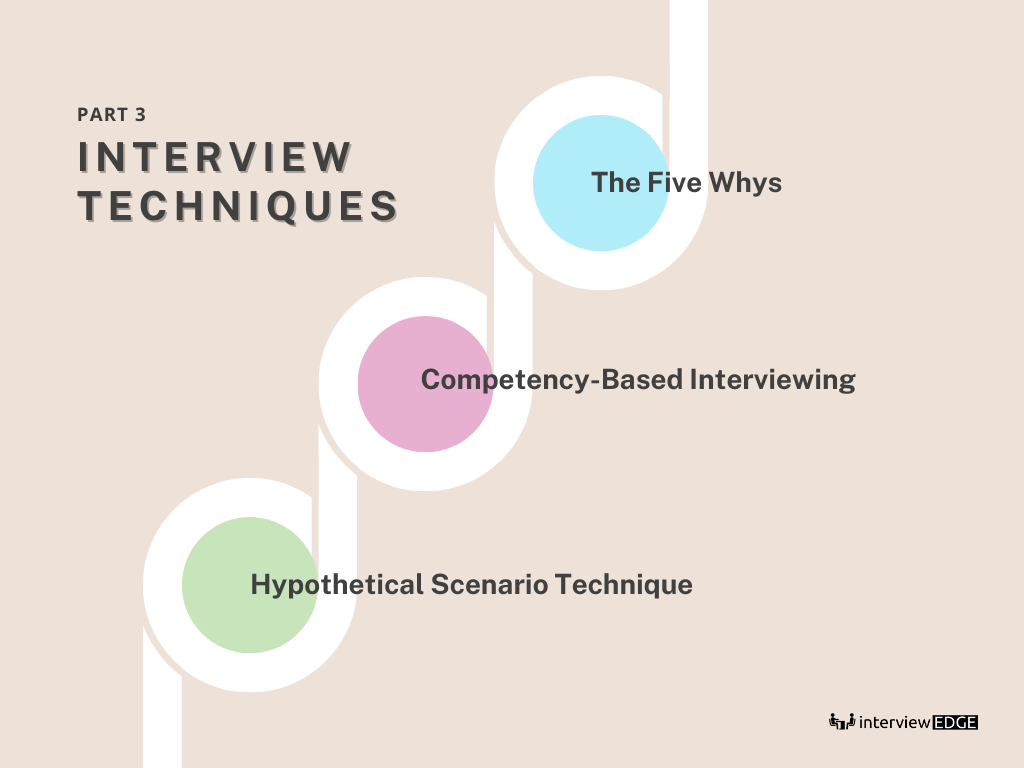
In Part 2, we explored STAR-like techniques such as CAR, SOAR, and PAR—frameworks that help you structure your answers to behavioural questions with clarity and impact. If you missed it, you can catch up here. But interviews aren’t just about behavioural questions. Sometimes, you’ll face hypothetical scenarios, competency-based questions, or even curveballs that test your creativity and quick thinking.
Today, we’ll focus on three additional techniques that are distinct from STAR and equally valuable for acing your next interview. These strategies will help you handle unexpected questions and showcase your problem-solving skills, no matter the field you’re in. Let’s dive in!
-
Hypothetical Scenario Technique
Some interviewers love to throw curveballs like:
- “How would you handle X situation?”
- “What would you do if Y happened?”
These questions are designed to test your problem-solving skills, creativity, and ability to think on your feet.
How to Tackle It:
- Clarify the Scenario: If the question is vague, ask for more details. For example, “Can you tell me more about the team’s current resources?”
- Outline Your Approach: Break down your thought process step by step. Show how you’d analyse the problem and take action.
- Highlight Key Skills: Emphasize skills like leadership, adaptability, or strategic thinking.
Example (Corporate Role):
“If I were faced with a sudden budget cut, I’d first assess which areas could be streamlined without compromising quality. Then, I’d prioritize essential tasks and explore alternative funding sources, like grants or partnerships.”
Example (NGO Role):
“If a key donor pulled out of a project, I’d immediately evaluate the financial gap and reach out to other potential donors. I’d also explore crowdfunding options and reallocate existing resources to keep the project on track.”
-
Competency-Based Interviewing
In these interviews, the focus is on specific skills or competencies required for the role, such as leadership, teamwork, or communication.
How to Prepare:
- Review the job description and identify key competencies.
- Prepare examples that demonstrate these skills using frameworks like STAR or CAR.
Example (Public Sector Role):
“For a role requiring strong teamwork, I’d share a story about how I collaborated with multiple departments to implement a new public health initiative. By fostering open communication and aligning goals, we successfully launched the program ahead of schedule.”
Example (Technical Role):
“If the job requires problem-solving, I’d talk about a time I debugged a critical software issue under tight deadlines. I’d explain how I systematically identified the root cause and implemented a solution that prevented future errors.”
-
The 5 Whys
This technique is all about digging deeper to understand the root cause of a problem. Interviewers might use it to test your analytical thinking and problem-solving skills.
What is the 5 Whys Technique?
The “5 Whys” technique is a simple yet powerful method for identifying the underlying causes of a situation or decision. By asking “Why?” five times, you can uncover deeper insights and show your ability to think critically about problems and solutions. It’s a great way to provide detailed answers that demonstrate your self-awareness and analytical thinking.
How to Use It:
- When asked about a decision or action, be prepared to explain the reasoning behind it.
- Show self-awareness by reflecting on what you learned from the experience.
Example (Community Service):
Interviewer: “Why did you choose to partner with local schools for your literacy program?”
You: “Because schools are central to the community, and teachers have direct access to children who need support. This approach allowed us to reach 200+ students in just three months. I learned that leveraging existing networks can amplify impact.”
Example (Corporate Role):
Interviewer: “Why did you decide to restructure the team?”
You: “Because the existing structure led to duplicated efforts and communication gaps. The restructuring improved efficiency by 20%, and it taught me the importance of aligning team roles with project goals.”
What’s Next?
Now that you’ve got a toolkit of techniques, it’s time to practice! Think about your past experiences and how you can frame them using these frameworks. And remember, the STAR method is still a fantastic starting point—use it as your foundation and build from there.
This concludes our 3-part series on mastering interview techniques. We hope these strategies help you feel more confident and prepared for your next interview.
Final Words
Interviews don’t have to be intimidating. With the right techniques and a bit of practice, you can turn even the toughest questions into opportunities to shine. Whether you’re using STAR, tackling hypotheticals, or digging deep with the Five Whys, the key is to stay calm, structured, and authentic.
What’s your go-to interview technique? Share your thoughts in the comments below—we’d love to hear from you!
And if you found this series helpful, don’t forget to check out our other blog posts for more interview preparation strategies, tips, and insights. Happy interviewing!

One comment on “How to Answer Tough Interview Questions Using the Hypothetical, Competency-Based & 5 Whys Techniques (Interview Techniques – Part 3)”